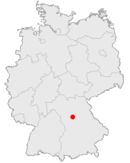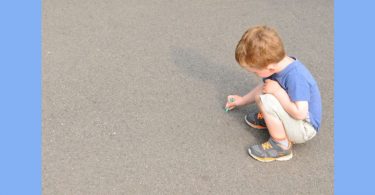Readers of this journal may have noticed homeopathic research summaries in previous issues. As a means of keeping you informed in this area, what follows is more on this Hpathy research series on some of the more notable trials that have found benefits with homeopathy.
Human Studies
- Rabe A., Weiser M., Klein P. Effectiveness and tolerability of a homoeopathic remedy compared with conventional therapy for mild viral infections. International Journal of Clinical Practice, 2004, Sep, 58, 9, 827-32. In this observational cohort study, 485 people with symptoms of mild viral infection (fever, headache, myalgia, cough or sore throat), were treated either via conventional medical means or with a homeopathic combination product. On a practitioner evaluation basis, at the end of the treatment period, the homeopathic combination provided a successful outcome in 78% of cases and conventional treatment in 52% of cases.
- Ammerschlager H., Klein P., Weiser M., Oberbaum M. Treatment of inflammatory diseases of the upper respiratory tract – comparison of a homeopathic complex remedy with xylometazoline. Forsch Komplementarmed Klass Naturheilkd. 2005, Feb, 12, 1,:24-31. In a multi-centre, controlled, cohort study, 739 people suffering from rhinitis or sinusitis were given either xylometazoline (a drug commonly used for nasal congestion, sinusitis and hay fever) or a homeopathic combination. Both forms of therapy provided similarly effective results.
- Issing W., Klein P., Weiser M. The homeopathic preparation Vertigoheel versus Ginkgo biloba in the treatment of vertigo in an elderly population: a double-blinded, randomized, controlled clinical trial. Journal of Alternative and Complementary Medicine. 2005, Feb, 11, 1,155-60. Over a 6 week period, 170 people with an age range of 60 to 80 years with atherosclerosis-related vertigo were treated for this condition using either a homeopathic combination or herbal Gingko biloba. Using a patient-assessed dizzyness questionnaire and practitioner assessment via line walking and other tests as methods of measurement, participants found that the homeopathic combination provided outcomes as good as those with gingko.
- Jacobs J., Herman P., Heron K., Olsen S., Vaughters L. Homeopathy for menopausal symptoms in breast cancer survivors: a preliminary randomized controlled trial. Journal of Alternative and Complementary Medicine. 2005, Feb, 11, 1, 21-7. This study compared the effects of an individualised homeopathic prescription with a homeopathic combination and placebo in 55 women suffering from menopausal symptoms for a period of 1 year. Both the individualised and combination homeopathic therapy provided an improvement in symptoms over placebo, with the individualised homeopathy showing the best outcomes over the first 3 months of the assessment period.
- Kim L.S., Riedlinger J.E., Baldwin C.M., Hilli L., Khalsa S.V., Messer S.A., Waters R.F. Treatment of seasonal allergic rhinitis using homeopathic preparation of common allergens in the Southwest Region of the US: A randomized, controlled clinical trial. Annals of Pharmacotherapy. 2005, Apr, 39, 4, 617-24. In this double-blind trial, 34 people diagnosed with moderate to severe seasonal allergic rhinitis were randomly assigned to receive either placebo or a combination of potentised allergens (made from the pollens of trees, grasses or weeds identified as allergens). After the 4 week treatment period using 2 sprays 3 times a day of either the potentised allergen mix or placebo, the trial subjects were assessed on the basis of their allergy specific symptoms using 3 separate questionnaire formats (RQLQ, MOS SF-36 and the WPAI). The potentised allergen mix showed significant positive changes compared to placebo.
- Weatherley-Jones E., Nicholl J.P., Thomas K.J., Parry G.J., McKendrick M.W., Green S.T., Stanley P.J., Lynch S.P. A randomised, controlled, triple-blind trial of the efficacy of homeopathic treatment for chronic fatigue syndrome. Journal of Psychosomatic Research. 2004, Feb, 56, 2, 189-97. In this well-controlled trial, where the practitioner, trial subject and data analyst were all blinded to the group assignments until the end of the data collection period, individualised homeopathic prescriptions were compared to placebo for 79 people suffering from chronic fatigue syndrome (as determined by the Oxford criteria for CFS). The trial was carried out over a 6 month period with monthly observations were used to determine clinical progress according to the Multidimensional Fatigue Inventory (MFI) as a primary measure and the Fatigue Impact Scale and Functional Limitations Profile as secondary measures. On the primary MFI measure, those using the individualised homeopathy had significant improvement over placebo.
Animal Studies
- Pedalino C.M.V., Perazzo F.F., Carvalho J.C.T., Matinho K.S., Massoco C. de O, Bonamin L.V. Effect of Atropa belladonna and Echinacea angustifolia in homeopathic dilution on experimental peritonitis. Homeopathy, 2004, 93, 193-198. 36 mice with experimentally induced peritonitis were given either Echinacea angustifolia 4X, a combination of Belladonna and Echinacea in mixed homeopathic potencies, a combination of Echinacea in mixed potencies, 2 separate combinations of Belladonna in mixed potencies or a control substance. Outcomes were measured using polymorphnuclear cell migration, mononuclear cell percentages, degenerate leucocyte proportions and phagocytosis characteristics. All of the homeopathic test substances produced positive outcomes with the Belladonna and Echinacea potency combination providing the maximal increase in polymorphnuclear cell migration and phagocytosis.
- Sato D.Y.O., Wal R., de Oliveira C.C., Cattaneo R.I., Malvezzi M., Gabardo J., Buchi D. de F. Histopathological and immunophenotyping studies on normal and sarcoma 180-bearing mice treated with a complex homeopathic medication. Homeopathy, 2005, Jan, 94, 1, 26-32. 55 mice with experimentally induced sarcomas were given placebo or a homeopathic combination product and observed daily over a period of 21 days. Compared to those receiving placebo, the mice being given the homeopathic combination showed a reduction in tumor size, an increased infiltration by lymphoid cells, granulation tissue and fibrosis surrounding the tumor, all of which are indicative of a positive outcome.
- Biswas S.J., Khuda-Bukhsh A.R. Evaluation of protective potentials of a potentized homeopathic drug, Chelidonium majus, during azo dye induced hepatocarcinogenesis in mice. Indian Journal of Experimental Biology. 2004, Jul, 42, 7, 698-714. In this study, groups of mice were given substances that would normally be expected to induce the formation of liver cancer. At the same time, selected groups of these mice were given either homeopathic Chelidonium in 30C or 200C potencies or a placebo control. Both potencies of Chelidonium provided a significant protective effect against the formation of liver cancers and favourably modulated some of the haematological markers normally associated with hepatotoxicity.
Plant Studies
- Baumgartner S., Thurneysen A., Heusser P. Growth stimulation of dwarf peas (Pisum sativum L.) through homeopathic potencies of plant growth substances. Forsch Komplementarmed Klass Naturheilkd. 2004, Oct,11, 5,:281-92. In an effort to determine the effects of homeopathically potentised plant growth substances on the shoot growth characteristics of dwarf peas, plant cultures were immersed for 24 hours in solutions containing 4 different plant growth substances in 12X to 30X potencies. These were compared to cultures grown in a control substance. At shoot length measurement after a 14 day growth period, the cultures grown in the potentised growth substances showed a measurable effect on the seed growth characteristics when compared to the control substance, the most notable of these, Gibberellin 17X, producing the largest growth stimulation.
- Glatthaar-Saalmuller B., Fallier-Becker P., Weiser M. Influence of homeopathically processed Coenzyme Q10 on proliferation and redifferentiation of endothelial cells. Forsch Komplementarmed Klass Naturheilkd. 2004, Oct, 11, 5,:267-73. CoEnzyme Q10, known for its ability to regulate cell metabolism and proliferation, was assessed for its ability to promote the same functions after being homeopathically potentised. Undifferentiated human umbilical vein endothelial cell cultures were exposed to various potencies of CoQ10 (5X to 10X) The cell division rate was then assessed by flow cytometry and cell differentiation determined by von Willebrand factor expression. The 7X to 10X potencies of CoQ10, and particularly the 8X potency, increased cell proliferation while none of the potencies appeared to enhance cell differentiation.
In Vitro Studies
- Glatthaar-Saalmuller B., Fallier-Becker P., Weiser M. Influence of homeopathically processed Coenzyme Q10 on proliferation and redifferentiation of endothelial cells. Forsch Komplementarmed Klass Naturheilkd. 2004, Oct, 11, 5,:267-73. CoEnzyme Q10, known for its ability to regulate cell metabolism and proliferation, was assessed for its ability to promote the same functions after being homeopathically potentised. Undifferentiated human umbilical vein endothelial cell cultures were exposed to various potencies of CoQ10 (5X to 10X) The cell division rate was then assessed by flow cytometry and cell differentiation determined by von Willebrand factor expression. The 7X to 10X potencies of CoQ10, and particularly the 8X potency, increased cell proliferation while none of the potencies appeared to enhance cell differentiation.



